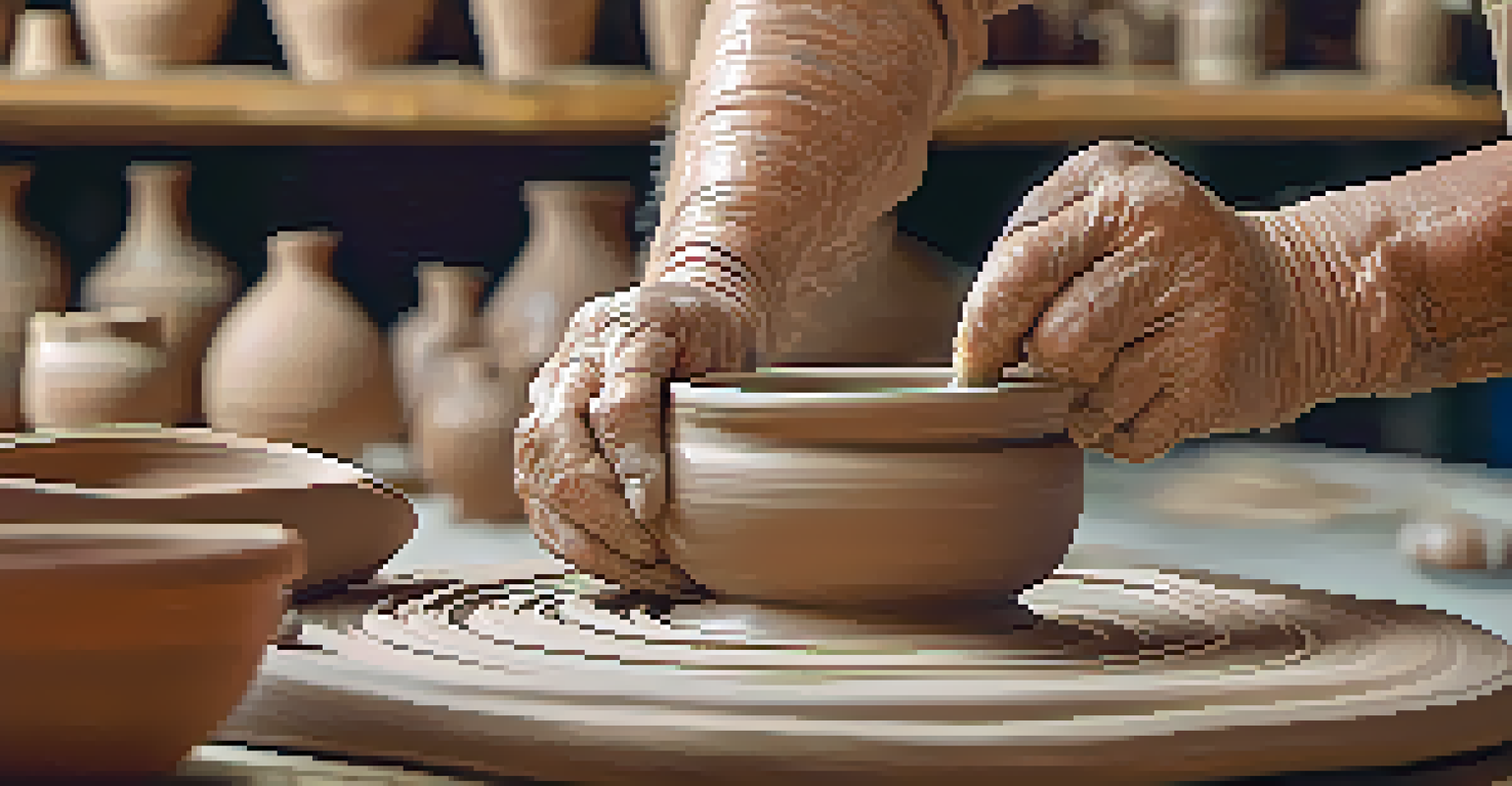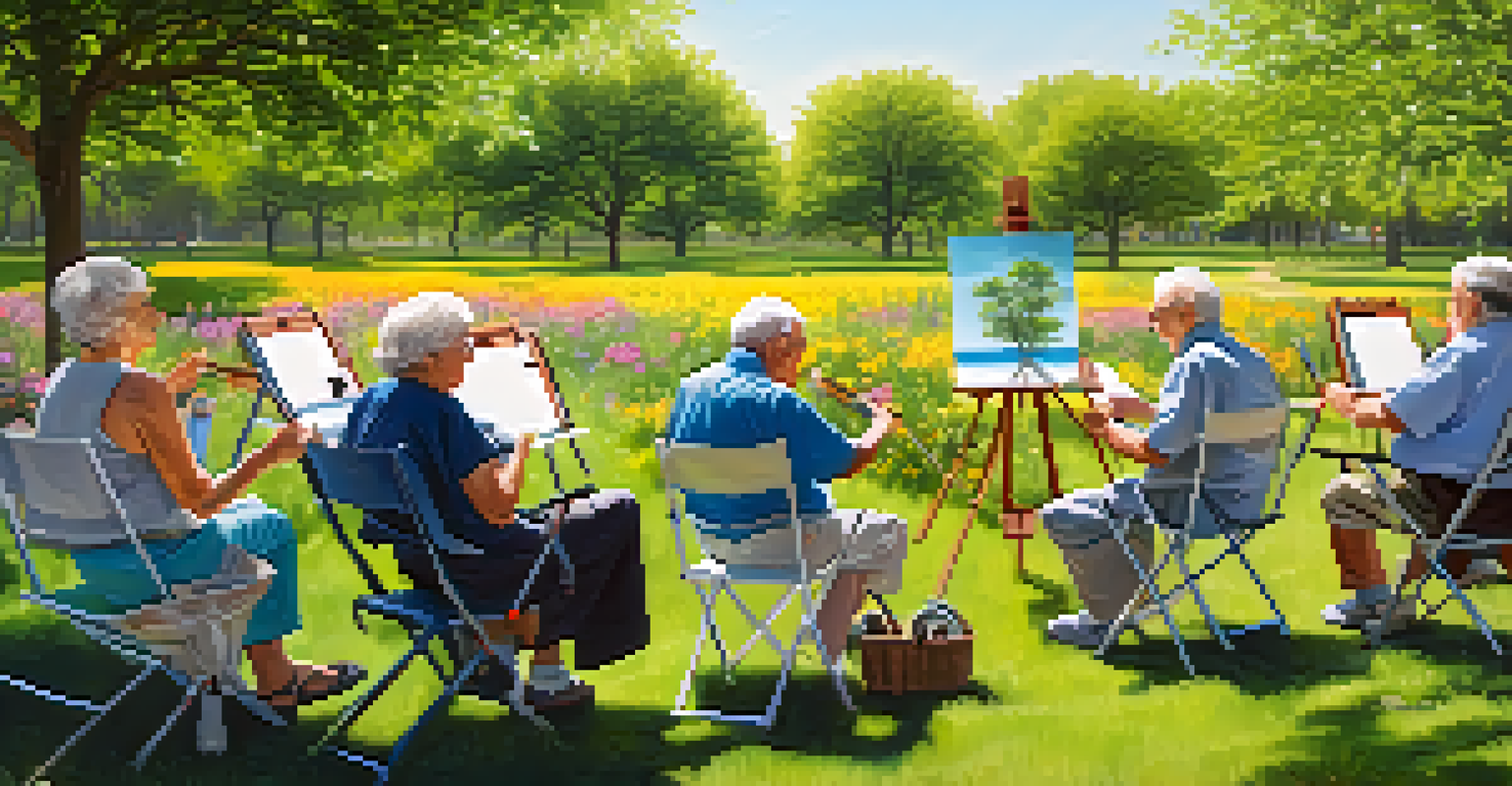Art as a Means of Reminiscence Therapy for Seniors

Understanding Reminiscence Therapy and Its Benefits
Reminiscence therapy is a form of therapy that encourages individuals, especially seniors, to reflect on past experiences and memories. This practice can help improve mood, cognitive function, and social interactions. By sharing stories and engaging in discussions about their past, seniors often find a renewed sense of purpose and connection.
Art enables us to find ourselves and lose ourselves at the same time.
Art plays a significant role in reminiscence therapy by providing a medium through which memories can be expressed creatively. Whether it's through painting, drawing, or even crafting, art allows seniors to tap into their memories in a unique way. This creative outlet can also reduce feelings of isolation, making it easier for seniors to connect with others.
Additionally, reminiscence therapy can foster a sense of identity and self-worth among seniors, as they reflect on their life experiences. By incorporating art into this therapeutic approach, caregivers and therapists can create a nurturing environment that celebrates individual stories and promotes emotional healing.
The Role of Art in Triggering Memories
Art can serve as a powerful trigger for memories, often evoking emotions and stories from the past. For many seniors, visual stimuli, such as colors, shapes, and familiar scenes, can spark vivid recollections of childhood or significant life events. This connection between art and memory is what makes it such a valuable tool in reminiscence therapy.

For instance, a simple painting of a garden might remind a senior of their childhood home or a beloved family member. These recollections can lead to meaningful conversations and sharing of life stories, helping to bridge the gap between generations. Engaging in art activities together can also create opportunities for family bonding, as loved ones can participate in the creative process.
Art Boosts Memory and Connection
Reminiscence therapy utilizes art to evoke memories and foster social interactions among seniors.
By providing a safe space for exploration and expression, art encourages seniors to share their memories and feelings. This not only enriches their own lives but also enhances the understanding and appreciation of their history among caregivers and family members.
Types of Art Activities Suitable for Seniors
There are numerous art activities that can be adapted for seniors, regardless of their skill level. Simple options like coloring books, painting, or collage-making can be both enjoyable and therapeutic. These activities require minimal instruction, allowing seniors to focus on self-expression rather than technique.
The best way to predict the future is to create it.
Crafting with materials such as clay or fabric can also be a wonderful way for seniors to engage in art. The tactile experience of working with different materials can be soothing and stimulating for their senses. Moreover, group activities, like pottery classes or painting workshops, can encourage social interaction and foster a sense of community.
It's essential to choose activities that resonate with the individual seniors' interests. Whether it's creating art inspired by their favorite places or working on projects that reflect their personal experiences, tailoring the art activities to their preferences can enhance enjoyment and participation.
Creating a Supportive Environment for Art Therapy
A supportive environment is crucial for effective reminiscence therapy through art. Caregivers and family members should ensure that the space is comfortable, well-lit, and equipped with necessary materials. Offering encouragement and positive feedback can help seniors feel valued and motivated to express themselves creatively.
It's also important to be patient and understanding, as some seniors may feel hesitant or insecure about their artistic abilities. By promoting a non-judgmental atmosphere, caregivers can help seniors embrace their creativity without fear of criticism. This approach fosters a sense of safety and openness, which is vital for sharing personal memories.
Therapeutic Benefits of Creativity
Engaging in artistic activities can significantly improve seniors' mental health, reducing anxiety and boosting self-esteem.
Additionally, incorporating music or familiar scents into the art-making process can enhance the experience. For instance, playing songs from a senior's youth or using scents that evoke happy memories can further stimulate reminiscence and inspire creativity.
The Therapeutic Effects of Art on Mental Health
Engaging in artistic activities has been shown to have numerous therapeutic effects on mental health, particularly for seniors. Art can reduce anxiety, alleviate depression, and provide an outlet for emotional expression. As seniors immerse themselves in creative tasks, they often experience a sense of flow that promotes relaxation and well-being.
Moreover, the act of creating art can boost self-esteem and foster a sense of accomplishment. Completing a painting or crafting a piece of art gives seniors tangible proof of their creativity, reinforcing feelings of worth and capability. This newfound confidence can encourage them to try new things and engage more actively with their surroundings.
Art also serves as a distraction from pain or discomfort, providing a welcome respite during challenging times. By focusing their attention on the creative process, seniors can momentarily escape from their worries and immerse themselves in a world of imagination and expression.
Enhancing Social Connections Through Art
Art can be a powerful catalyst for social connections among seniors. Group art activities foster collaboration and communication, allowing seniors to bond over shared experiences and creative endeavors. These interactions can lead to friendships and support networks, which are vital for emotional health and well-being.
Additionally, when seniors share their artwork with others, it opens up opportunities for storytelling and reminiscence. Discussing the inspiration behind their creations can lead to rich conversations that deepen relationships with family members and caregivers. This exchange not only validates their experiences but also strengthens emotional ties.
Supportive Spaces Enhance Expression
Creating a comfortable and encouraging environment is essential for seniors to explore their creativity and share personal memories.
Organizing exhibitions or showcasing artwork within senior communities can further enhance social engagement. Celebrating these creative accomplishments encourages participation and pride while providing a platform for seniors to share their stories with a wider audience.
Conclusion: Embracing Art for a Richer Life Experience
Incorporating art into reminiscence therapy offers seniors a unique avenue for self-expression and memory exploration. The therapeutic effects of art can enhance mental well-being, improve social connections, and provide a sense of accomplishment. As caregivers and family members, embracing art as a tool for reminiscence therapy can profoundly impact seniors' quality of life.
By understanding the various ways art can facilitate reminiscence, we can create more engaging and supportive environments for seniors. Encouraging creative expression through art not only allows seniors to share their stories but also deepens the connections we share with them.

Ultimately, fostering a culture that values creativity and reminiscence can lead to a richer, more fulfilling life experience for seniors. Let's celebrate their journeys and memories through the transformative power of art.